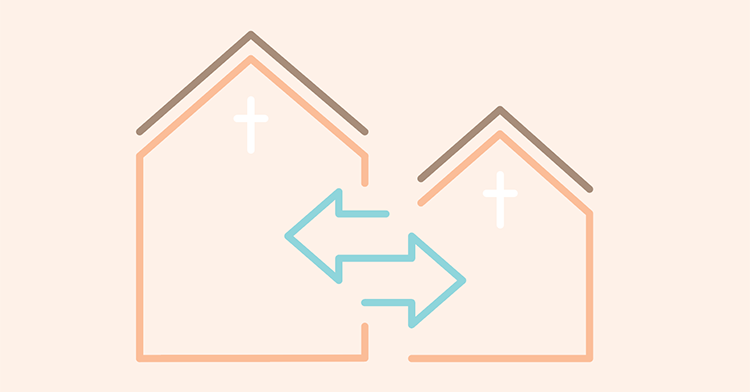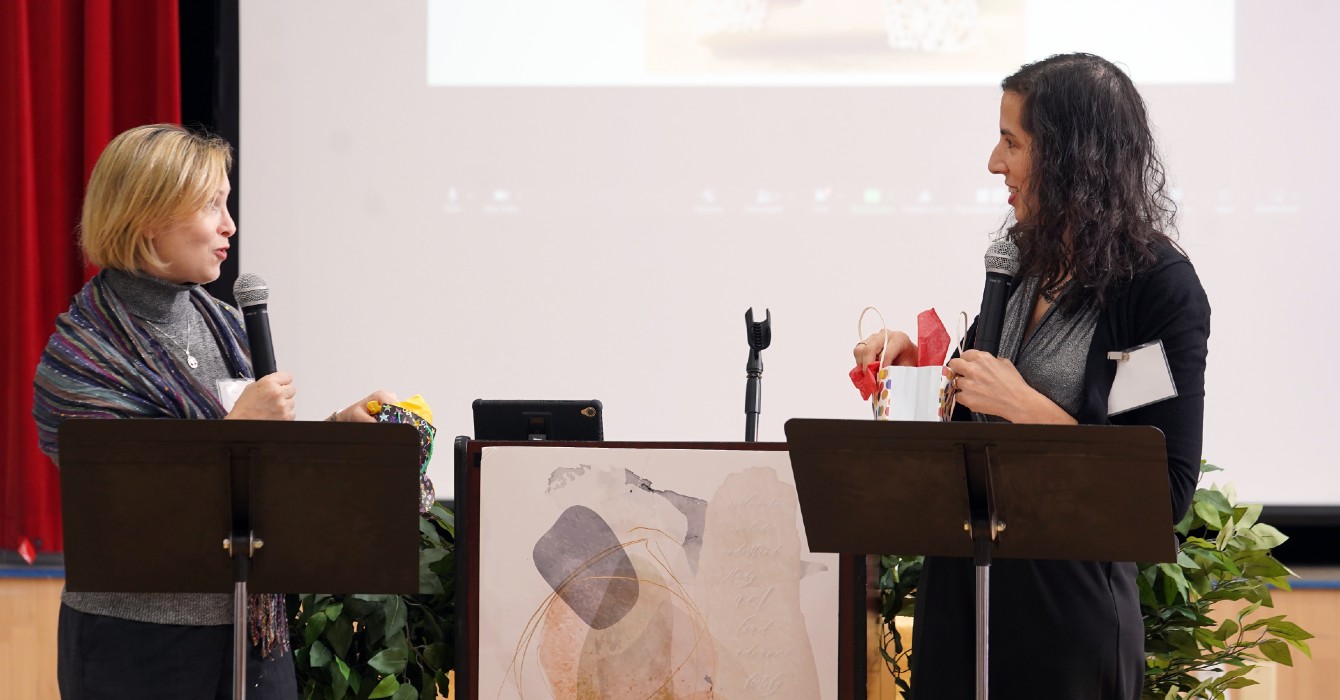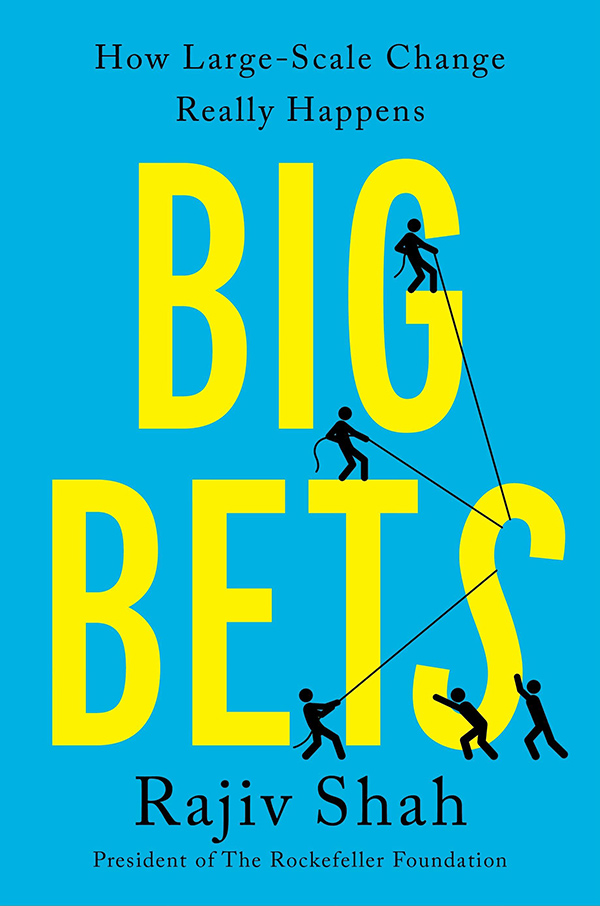When Purpose Built Communities, an Atlanta nonprofit that works to revitalize troubled neighborhoods across the nation, is trying to recruit community leaders, it asks them a clear but tough question: “How willing are you to cause disruptive change in your community?”
 “There are some people who aren’t willing to do that,” says Carol R. Naughton, the senior vice president of Purpose Built Communities. “Even though they want change, they’re just not willing to take the heat.”
“There are some people who aren’t willing to do that,” says Carol R. Naughton, the senior vice president of Purpose Built Communities. “Even though they want change, they’re just not willing to take the heat.”
“You may have to say, ‘You know what? What you’ve been doing hasn’t been working very well for this particular community,’” Naughton said. “‘Are you willing to stand up and be an advocate for disruptive change in your community?’”
Established in 2009, Purpose Built Communities grew out of a nationally recognized effort in the 1990s to revitalize Atlanta’s East Lake neighborhood, an area long plagued by poverty, crime, rampant drug use and substandard schools. Led by developer and philanthropist Tom Cousins, the East Lake initiative brought together business, government and community leaders to transform the neighborhood using a holistic approach to community redevelopment.
Purpose Built Communities now takes that redevelopment model to other cities, such as New Orleans, Indianapolis and Omaha, working with local leaders.
Before helping to found Purpose Built Communities, Naughton served for seven years as the executive director of the East Lake Foundation, the nonprofit that led the revitalization effort in East Lake. Before that, she was general counsel and deputy executive director for legal and nonprofit affairs for the Atlanta Housing Authority.
She spoke recently with Faith & Leadership about Purpose Built, the challenges of community redevelopment and lessons for organizational leaders. The following is an edited transcript.
Q: Give us an overview of Purpose Built Communities. Who are you? What do you do?
We are a not-for-profit consulting group that helps local leaders take the community redevelopment model that we developed here in Atlanta in the East Lake neighborhood and implement it in their own communities.
The East Lake Foundation leads the community development work in East Lake. Purpose Built Communities is the sister organization that helps other folks do this around the country.
We don’t charge for what we do. We want to be able to say, “Keep your money in your own community, and we will share with you what has worked well not only in East Lake but what is working well in all the sites that we are working in.”
Q: How did Purpose Built Communities get started?
We had thousands of people a year coming to visit us in East Lake -- developers, academics, community development people, educators.
Everybody was saying, “This is so amazing; we want to do it, too.”
We’d show them around for a day and give them a good experience, and then they would largely go off and nothing would change. The one exception was after Hurricane Katrina, when three leaders in New Orleans were introduced to East Lake. And the East Lake Foundation board freed up about 30 percent of my time (I was then executive director of the East Lake Foundation) to help those leaders get this work going in New Orleans.
That was kind of our “aha” moment, when we realized that we could help local leaders -- not just show them what we’ve done but actually help them understand what the processes were, what the levers of success were, what they needed to do in order to be able to get something meaningful going. That was really how the idea of Purpose Built started.
Q: You mentioned the “levers of success” that grew out of the revitalization effort in East Lake and that you now take to other communities. Tell us about those.
We think that there are three buckets, or preconditions, of success [for our approach to community redevelopment].
The first one is around leadership. It’s “speed of the captain, speed of the crew” -- whether you’re talking about a school principal or whether you’re talking about community revitalization.
So can you get a group of prominent, successful civic-, business- and faith-based leaders who are really interested -- and willing to spend a couple of years using some of their relationships, and maybe some of their treasure -- to help explore whether this makes sense in their community?
It doesn’t work everywhere. If you think of community development being a really wide spectrum of activities, we’re one tiny little niche. Where it works, it works beautifully, but you can’t put a round peg in a square hole.
So it’s understanding whether this is the right model, given the totality of circumstances in a particular neighborhood. That’s really what that first exploration is about. Does this resonate with the community? Does it resonate with leadership?
The second piece is around housing. Is there an opportunity to replace or to build new high-quality mixed-income housing in a neighborhood that can be successful? We mean mixed-income -- real mixed-income -- housing that serves families across the broad range of incomes.
We know that low-income families do better when they live in mixed-income neighborhoods, and we know that mixed-income neighborhoods attract additional private and public investment. Part of our strategy is to create that environment through high-quality mixed-income housing that no longer stigmatizes families based on where they live or what their income is. Mixed-income means that the housing will be better designed, better planned, better developed and better managed than if it’s 100 percent low-income.
And the third bucket is around education. Is there an opportunity to create a superior cradle-to-college education pipeline? That usually means bringing high-quality early learning to a community. It often means a charter or contract school as the anchor for your K-12 pipeline. Most of the places that we work with, we’ll use a charter or a contract school model.
Sometimes, we’re invited to a community before anything has happened, where somebody in a neighborhood says, “We can do better than this; come help us start this from scratch.”
Other times, real estate developers, both for-profit and not-for-profit, will say, “You know what? Housing is not enough. I’ve done a great job on the housing piece, but I need somebody to help me on the education and health and wellness and that coordination piece.” And they’ll invite us to help them create these next pieces.
In Indianapolis, for example, there were two high-quality charter schools already in place, and one of the founders of one of those schools heard about us and said, “Aha, that’s what this neighborhood needs next -- high-quality mixed-income housing -- and we’ve got to find a way to tie it all together so it really works as a community.”
Q: Were the residents at East Lake skeptical at first, and if so, how do you overcome that skepticism?
Of course. Absolutely. I mean, you had some nice, new, shiny people at the Atlanta Housing Authority -- I was in fact one of them -- who said, “Hi, I’m here to help. We haven’t been able to fix the toilet in 10 years, but trust us to manage this process that will require you at least temporarily to give up your home while the community can be relocated. But we promise, we’re going to give you a better place to live in the meantime.”
And on the other hand, you had a rich, white real estate developer -- Tom Cousins -- who says, “Hi, I’m from Buckhead, and I’m here to help.”
So of course, people were skeptical. The first thing both the housing authority and the East Lake Foundation had to do was really earn trust and build relationships in the community. And that happened primarily through a building relationship with Eva Davis, who was the president of the East Lake Meadows Tenants Association.
She was in fact the gatekeeper to East Lake. And she had a real vision of wanting to achieve virtually the same things that Tom Cousins and others wanted to achieve. But we had to build trust and build relationships so we could get there.
Q: The East Lake effort began in 1995, and Purpose Built Communities in 2009. What are the keys to sustainability that you’ve learned from this effort?
Well, No. 1 is having a long horizon. Families don’t break out of the cycle of poverty during a three-year grant cycle. This is long-term work.
So that’s the first thing. Have a long horizon. Look for early wins. Look for doing smart things on the front end that will ensure your success down the road, but you’ve got to have a long-term horizon. It might be the most important thing.
The second, I would say, is that we think our model really gets to the kinds of investments that make a difference in a community: mixed-income housing, a cradle-to-college education pipeline, and community health and wellness. If you invest in those three areas over time, you’re going to get better outcomes.
It’s not just willy-nilly. It’s coordinated. It’s thoughtful. It’s “Invest in these ways and you will improve the quality of life for people who live in that neighborhood, and you will attract new people to the community as well.” But you’ve got to do both.
Q: What’s your advice for how to get leaders in a community to work together and collaborate? What do you tell people to “leave outside the door”?
Of course, ideally, you want to say, “Leave your ego, and leave the word ‘I’ outside.” But people can’t do that.
When we’re looking for leaders from the civic, business and faith communities, we ask them, “How willing are you to cause disruptive change in your community? Because you’re going to be asking your friends and acquaintances, the people you go to church with -- good people whom you may like and even love -- to do things differently than they’ve been doing them for a long time.”
You may have to say, “You know what? What you’ve been doing hasn’t been working very well for this particular community. Are you willing to stand up and be an advocate for disruptive change in your community?”
There are some people who aren’t willing to do that. Even though they want change, they’re just not willing to take the heat. We’re looking for people who are committed to this kind of social justice, committed to creating the kind of America where everybody really does have a chance.







